
Two weeks ago, Chris asked about your uses for offcuts. Last week, he offered thoughts about giving away things we make. Here’s your feedback about both topics. – Editor
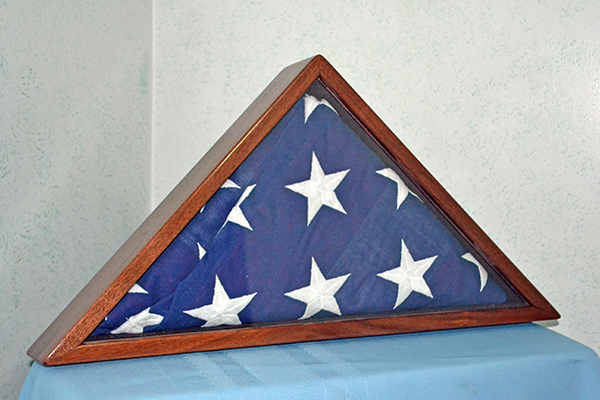
“I got some walnut from an extended family member’s farm. It was blown down in a tornado back in the late 1960s. When he passed, I made a flag display case for his military flag from his funeral and gave it to his family. I always enjoy making things for others and giving it to them or a family member.” – Tim Lange
“I do not sell the things I make, but I do give them away. I have found (like you, I suspect) that the joy of making is the reason I now play with wood. But the joy of giving away something handmade is a joy for both the giver and the receiver. And while some have argued with me that if I’d sell it, it would be worth more to the receiver, I don’t think so. I have handmade things given to me from decades ago that I still cherish. So good on you for returning that which was given you in a new form. It was a gift that you both can cherish!” – Steve Kendal
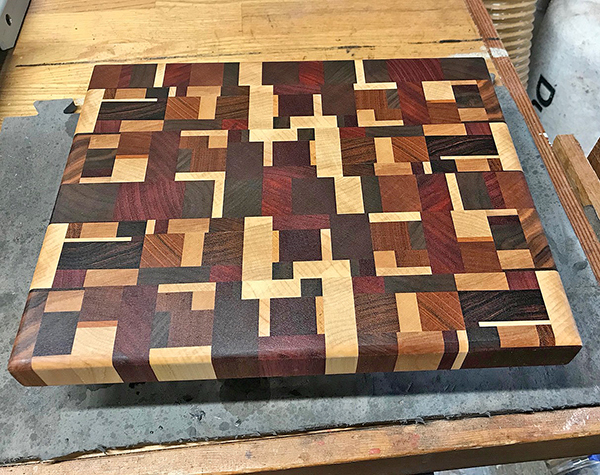
“I generate many short pieces of hardwoods from my craft woodworking projects. I keep them in a bin and then use them to make end-grain cutting boards like these (above).” – Joyce Pearson
“Like you, I hate to throw away what might be a needed piece of good material. (I have a bunch of mis-cut maple arms from a La-Z-Boy factory trash pile over 40 years ago. I just need to find the right use.) A number of years ago, we had the camphor tree from our front yard felled, milled, and air-dried (in the desert). Our usable yield was over 400 board feet of lumber, including a number of slabs 28 to 30 inches wide. Over the years, we’ve been slowly whittling away at the stack. Other projects have come along in the interim and we keep the shorts and cutoffs on a rack along with our milled camphor. Occasionally, an opportunity arises to winnow through them for a special project that does not require great lengths or widths of material. I’m currently working (slowly) on a campaign secretary that will be mostly camphor. The two carcasses are milled, cut and dovetailed, ready for assembly. The drawer fronts and secretary (desk) parts are both rough-cut. I’m currently practicing hand inlays for the brass hardware I’ll be installing (carrying handles, drawer pulls, corner reinforcements, etc.). A suggestion: Climb up to that attic in winter, then it will only be dark.” – Ralph Loimbardo
“I tend to use up much of my leftovers for smaller one-off projects. Sometimes there’s a twinge of regret making a jaw for a bicycle service stand out of a real nice piece of walnut or maple, but at least it gets used. I have a storage box for my brass setup blocks made from some of the prettiest figured chestnut that’s probably 150 years old. It’s a silly application but pure visual pleasure every time I reach to the shelf to use them!” – Greg Harmon
“Every year or two, I take a look at what I have. Unless it is truly an exotic or figured piece, I discard it. I try not to keep a lot of domestic hardwoods, since like Chris I buy what is needed for a project.” – Willie Hickman
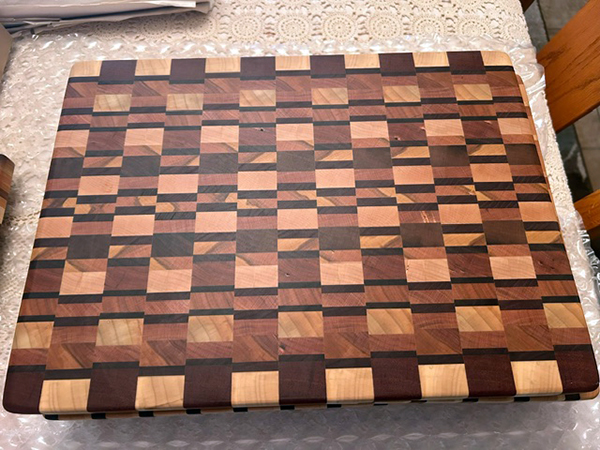
“One of my side gigs is making cutting boards and charcuterie boards, like the one above. The process results in A LOT of scrap materials that can’t be used in the intended project. I’d seen some YouTube videos showing ‘random’ board designs. So I said, what the heck, and I threw together two boards using nothing but scrap.” – Tracy Novak
“I, too, have lots of small cutoffs. But I make both large and small project and I also turn. And I over-buy the wood to be sure the projects can skip defects, make grain matches, etc. I use the cutoffs from the big projects for the smaller ones. Made a kids table and chairs with leftovers used to make two cookbook stands, a charcuterie board, to footstools, bottle opener handles, bottle stoppers and several small bowls to accompany charcuterie boards. The real small pieces that are left become the energy that powers my barbecue smoker. I don’t put them in the attic, else they are forgotten!” – James Brunk
“I have two 5-gallon pails. All that I will save is that which will fit in the two pails standing on end. These pails are always in view. If I don’t do that, I would save everything.” – Rino
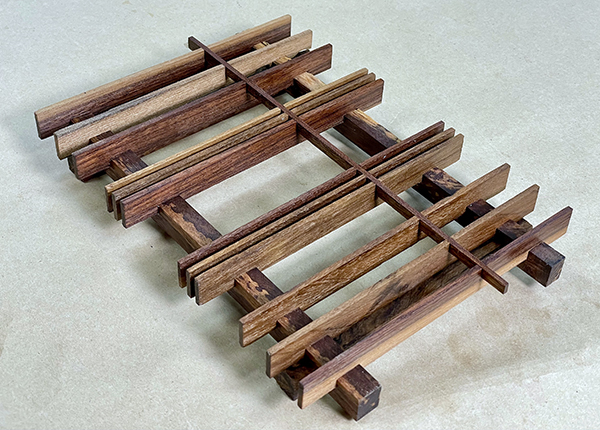
“My trivets don’t use a lot of material, but they do keep some of the best of the little pieces of wood created in my shop from going up in flames. If you lined up the 30+ I’ve made and put simple ones to the left and complex ones to the right, the one above, made from spalted walnut, would be in the middle of the range. The one below would go to the right side. For the finish, I dunk them in a tub of mineral oil, allow them to drip to almost dry and then wipe down any heavy spots before the oil sets up. Design-wise, these are intentionally lightweight structures, but all of them are more than capable of supporting the biggest and heaviest of bowls and platters on a dining table. As you know, working with small parts on full-size equipment requires patience, knowledge and skill. That said, making these is a good way to develop all of those attributes. Cheers to making sawdust!” – Bob Peterson
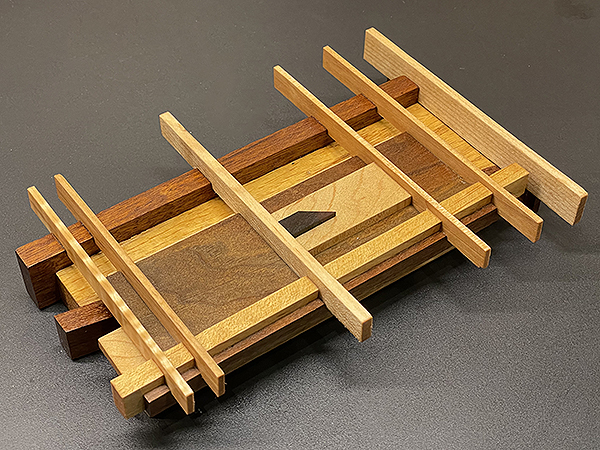
“I have had a booth at a craft fair for 35 years. Some crafts have small parts. I process small parts in advance of making my crafts. The small parts are usually easier to store.” – Russell Rodrigue
“I gotta say that my strategy for dealing with leftovers is more of a non-strategy. I simply do not have enough space. Very frustrating, since being a pack rat is in my DNA. My other non-technique is called ‘the burn barrel.’ When cutoffs accumulate in the shop and are just too short to pile onto a shelf in the wood shed, they go into the burn barrel — amazingly efficient in space reduction. A confession: there are a couple of shelves in the wood shed that hold pieces bestowed with the Wood Emeritus title. Been with me for so long that their worth renders them unusable.” – Kim Fischer (The WoodFisch)
“I’m in the same situation about dealing with offcuts. If there isn’t that much left that’s useful or an exotic species, it becomes kindling.” – Rob J.
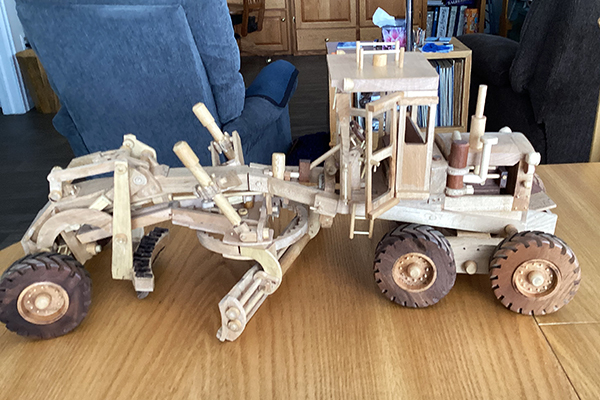
“I like to build small wooden models and try to utilize my scrap pile for the many small parts I need. Scrap furniture gets cut up, too, if it’s made of real hardwood.” – John van Veen





